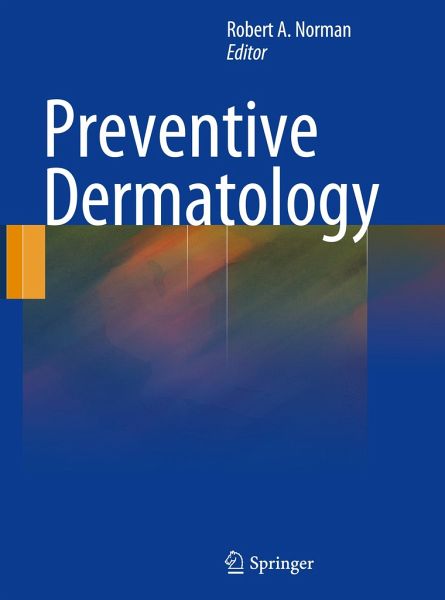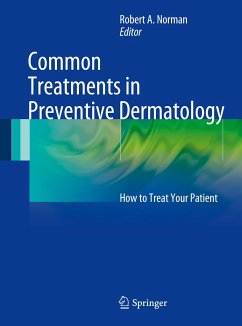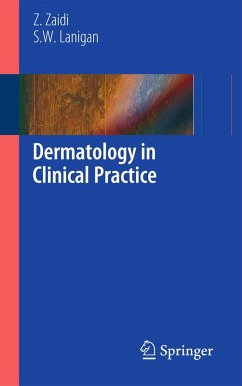
Preventive Dermatology

PAYBACK Punkte
38 °P sammeln!
The physician's responsibility continues to increase daily while providing health care in the 21st century; not only in keeping up with the increase of information, but also having to pay more attention to patient compliance. In addition, patients are educated, and often appreciate participation with a provider about treatment and medication choice. Often they have access to the Internet and other medical information and want to make informed choices along with their physician. Preventive Dermatology will convey prevention and medication information to patients and thus help them reap the benefits of participating in their own health care and disease reduction.
In his latest book, Dr. Robert A. Norman introduces us to the intriguing concept of preventive dermatology. Although dermatologists have long been patient advocates and have stressed vigorously on the importance of sun avoidance and protection, there is still much more that we can do to prevent disease. Dr. Norman and his skilled coterie of collaborators discuss two distinct types of prevention in dermatology: the prevention of skin diseases and the prevention of s- temic disorders, some with only very indirect connections to the skin. The frst is fairly well known to dermatologists; the second is truly an emerging concept of great importance. Educational efforts to prevent or at least control skin disease may range from the proper use of sunscreens to weight loss in psoriatic patients, the avoidance of trigger factors in rosacea, proper skin care in atopic dermatitis, or adoption of a low-fat diet to decrease the incidence of actinic keratosis and nonmelanoma skin cancer. Another good example is the use of vaccines to protect against diseases such as herpes zoster and genital HPV infection in females.












